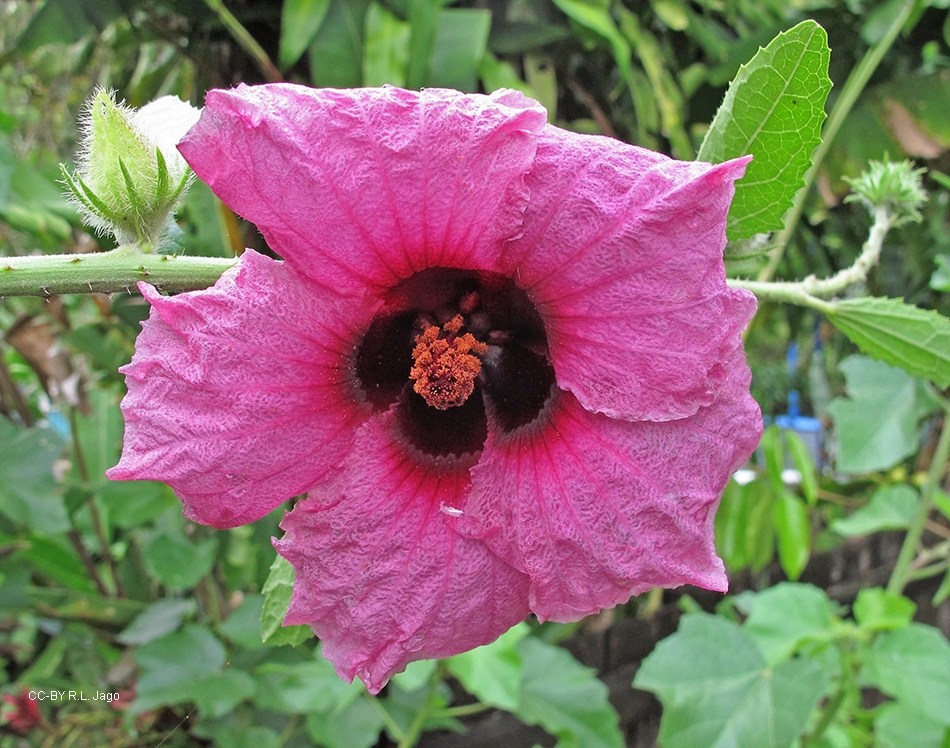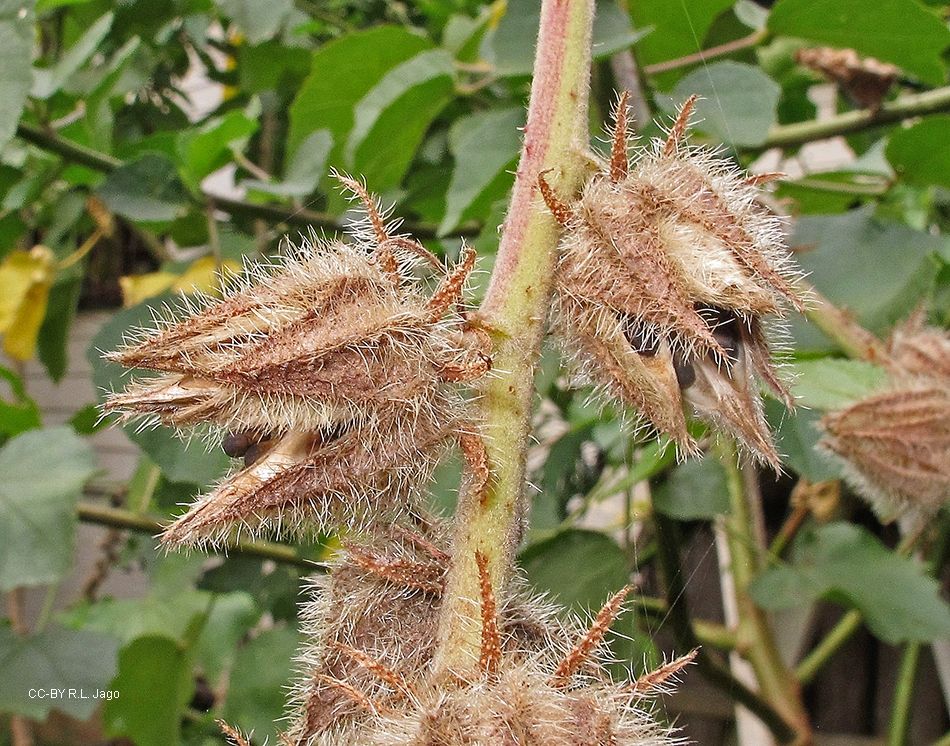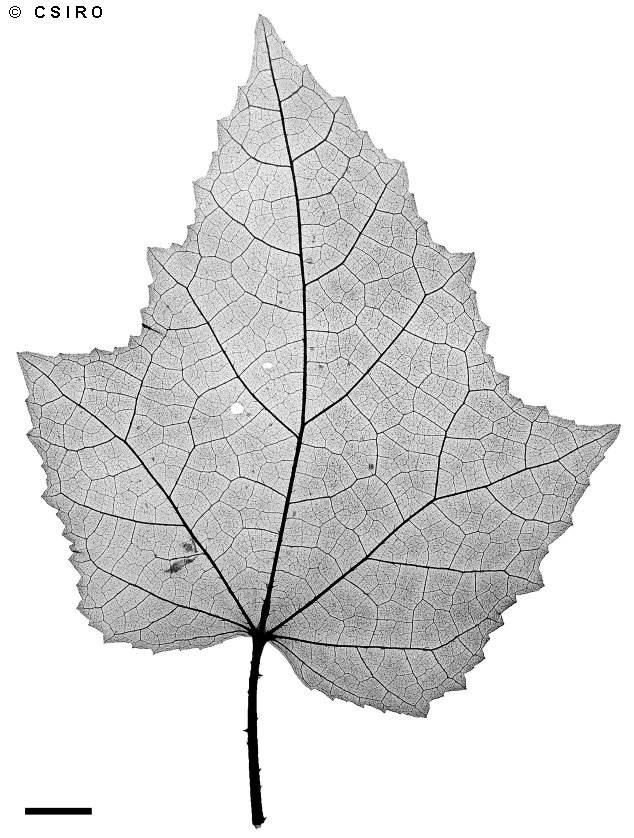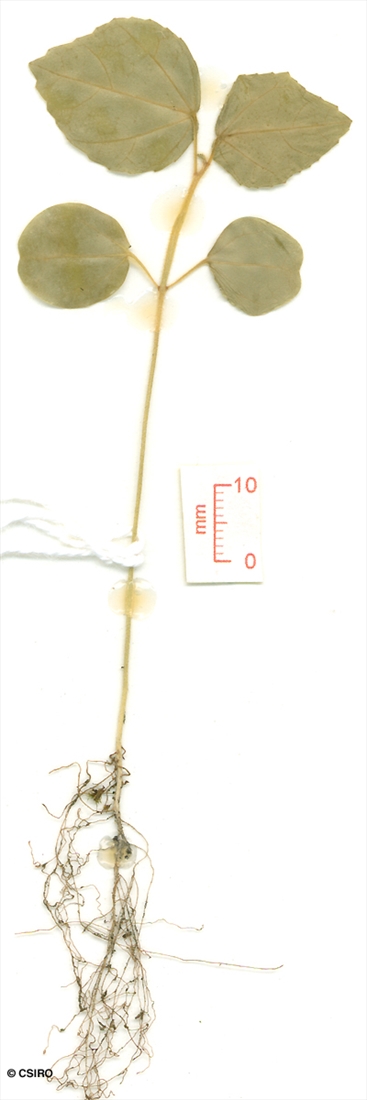Australian Tropical Rainforest Plants - Online edition
Hibiscus diversifolius subsp. rivularis (Bremek. & Oberm.) Exell







Exell, A.W. (1961) Flora Zambesiaca 1(2): 444.
Hibiscus, Swamp; Swamp Hibiscus
Flowers and fruits as a shrub 2-4 m tall.
Leaf blades about 3-10 x 2.5-11 cm, scabrous on both the upper and lower surfaces. Stellate hairs visible on both the upper and lower surfaces. Petioles and twigs clothed with white or pale tortuous and stellate hairs as well as short broad-based spines. Five veins radiate from the base of the leaf blade. Twig bark strong and fibrous when stripped.
Pedicel about 2-5 mm long. Epicalyx segments 7-10, each about 8-15 x 0.5-1 mm. Calyx campanulate, 10-15 mm long, outer surface clothed in stellate hairs and long bristle-like hairs with swollen bases. Petals about 4-5 x 2.5-4 cm. Corolla purplish black towards the centre. Staminal column about 1.5-3 cm long, anther filaments about 1.5 mm long. Ovary clothed in appressed straight white hairs. Stigmas five, resembling pom-poms.
Cotyledons about 14-16 x 13-15 mm, petiole 5-10 mm long. Cotyledons, petioles and stem hairy. First pair of true leaves cordate, margin toothed and sometimes slightly lobed. At the tenth leaf stage: leaf blade +/- cordate, margin with a few large indistinct lobes and numerous teeth, both the upper and lower surfaces of the leaf blade clothed in simple and stellate hairs, a small raised gland is visible on the midrib on the underside of the leaf blade towards the base of the leaf. Stipules linear, about 1-3 mm long. Stem bark very fibrous when stripped. Seed germination time 11 to 353 days.
Occurs in NEQ, this subspecies is thought to be introduced from Africa. Altitudinal range in NEQ from 600-800 m. Usually grows on the edges of crater lakes or in permanently wet situations on the edge of rain forest. Also occurs in Africa. Hibiscus diversifolius subsp. diversifolius (with yellow flowers) occurs inCEQregion and southwards but is not known to occur in or adjacent to rainforest habitats.





